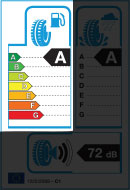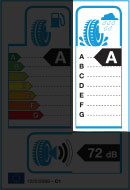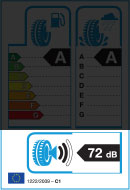
Tyre Labelling In The UK
The European Union has made tyre labelling a requirement since 2012 and is similar to the energy star rating used on other electronic and construction products. It demonstrates three areas of tyre performance:
- Fuel Efficiency
- Wet Grip
- External Rolling Noise
They were designed to inform consumers and commercial businesses about the product being bought and to promote safer, economic and environmentally friendly products.
The grades which are shown on the labels indicate how good or bad the rating is in that area, though take care making a decision as this does not always provide all the specifications of the product. Consult us to find out more about tyre brands.
The Labels
It is kept simple so comparing whichever brand you are looking at is easy and is based on the vital statistics consumers are most interested in.
Fuel Efficiency
 |
The first are on the label is Fuel Efficiency which assists in reducing CO2emissions and the cost of driving. Out of the grades displayed or step between grades advises on a fuel consumption reduction of 2.5% – 4.% and an additional 0.42 mpg – 0.56 mpg for a vehicle rated at 26 mpg. |
Wet Grip
 |
The area to the right of this is the Wet Grip grading. It references the tyre performance on stopping on a wet road surface. When the vehicle is travelling at 50 mph, each grade step reduces the stopping distance of between 3 m and 6 m. Approximately 1 to 2 car lengths. |
External Rolling Noise
 |
All vehicles make noise when travelling along a road and the last area on the label demonstrates how much noise the tyre generates when travelling. These are measured in decibels or dB, the higher the value, the louder the noise created, but this is effected by the type of road surface driven on also. The one demonstrated in the label is like the noise that comes from your vacuum cleaner. |
Tags: Tyre Tyre Labelling




Leave a Reply
You must be logged in to post a comment.